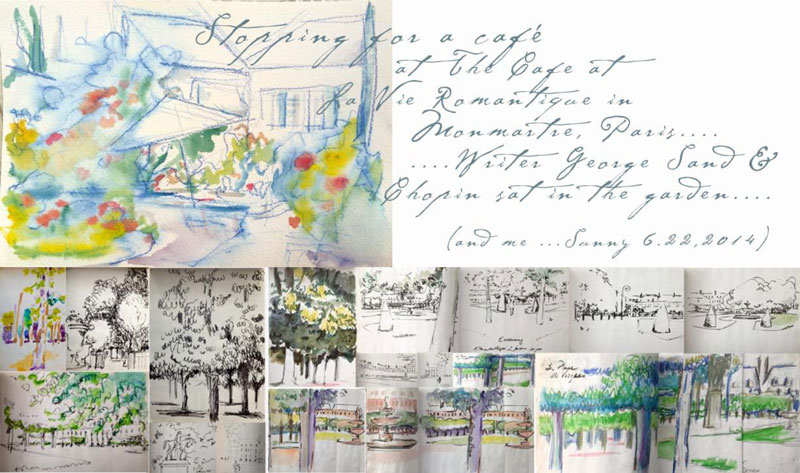
Art journaling has a long-standing artistic tradition. Artists have kept notebooks in which they sketched, practiced, experimented, and recorded their ideas. Visual journaling has been a way for them to resolve questions, save daily observations, and serve as a starting point for more finished works of art to evolve.
The most famous of all art journalists was Leonardo da Vinci who carried a visual journal with him at all times. Seven thousand pages exist today from his journals that recorded his myriad ideas, impressions, and observations — from drawings and paintings to philosophical musings and prophecies, plans for inventions, and treatises on anatomy, botany, geology, flight, and water.
The Brooklyn-born graffiti artist Jean-Michel Basquiat (1960-1988) also kept many notebooks with poetry fragments, wordplay, sketches, and personal observations. The first major exhibition of his notebooks, Basquiat: The Unknown Notebooks, features 160 pages of these rarely seen documents, along with related works on paper and large-scale paintings.
Lois Bender is a New York artist whose “sketch to final finish” process has inspired her to start her Nature Journal Sketchbook Workshops. Her students learn how to draw their inspirations into journal formats. She is skilled in drawing, watercolor, photography, and printmaking and combines her passion for creating art, travel and gardens.
I recently had a conversation with Lois Bender to learn more about Art Journaling. Hopefully, after reading this, you may want to experience the many benefits of this creative process.
RP: Lois, when did you start doing Art Journaling?
LB: As an art student I was encouraged by my art teachers to keep an Art Journal and developed the habit. Art Journaling improves one’s art style and voice because you make frequent drawings and see a sequential development. I have kept one going especially while drawing and painting onsite from nature. When traveling, especially in Paris, I always keep one!
RP: I’ve heard both terms used — Art Journaling and Sketchbooking. Are they the same kind of activity?
LB: Both terms describe writing and image-making in a journal, sketchbook or notebook. The terms are interchangeable. Although Art Journaling emphasizes the image aspect, words and images are usually combined in both Art Journaling and Sketchbooking. They both convey the notion of the personal and subjective recording of your experiences. This activity keeps you “in practice,” just as perhaps “Piano scales” do for a pianist.
RP: Lois, what are the benefits you derive from Art Journaling?
LB: Creativity, self-reflection and emotional expression come together in Art Journaling. It’s an act of “personal integration,” connecting your thoughts, emotions and subjects you enjoy. I always incorporate color in my sketchbooks. My medium of choice is watercolor because the flow of water is so healing. Art Journaling serves as an “alternative selfie” record of one’s experiences. Anyone can make Art Journaling a fun activity and life practice to promote self-awareness and personal development.
RP: What advice can you give to someone who wants to begin Art Journaling?
LB: Start with jottings and scribbles on paper, which I call “flights of fancy”. They can evolve into strong pages of self-expression. Allow your intuition to get you started. You can get a “model” to study from or choose from different subject matter you like for themes in your art journal.
One source of inspiration can be a creating a problem to solve. For example: I will “play,” designing a page of overlapping simple square boxes, varying sizes. And I ask, how many ways can I divide space?
Another activity to drive creativity is to ask: What if I try this or that? For example, simply overlapping the letters of your name is a prompt for spinning off multiple abstract designs and more flights of fancy. It’s an open-ended series of possibilities!
For more information about Lois Bender visit gardenspiritsny.com.

An artist and their notebook. Comments on their art, what they are thinking and how it can help them move on. It can also help us when we review and consider what we read at this moment. It can give us a new perspective of what we see, think and where we can go. Thank you for this article.